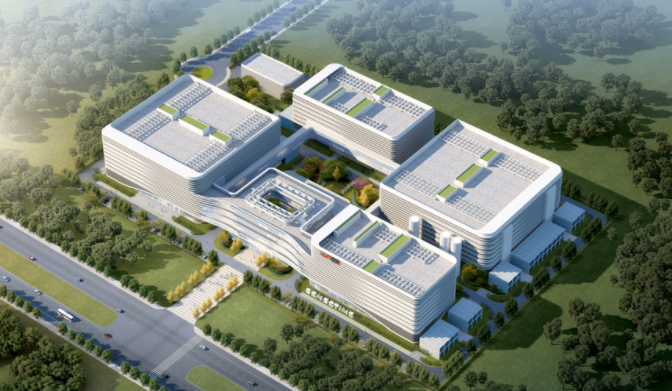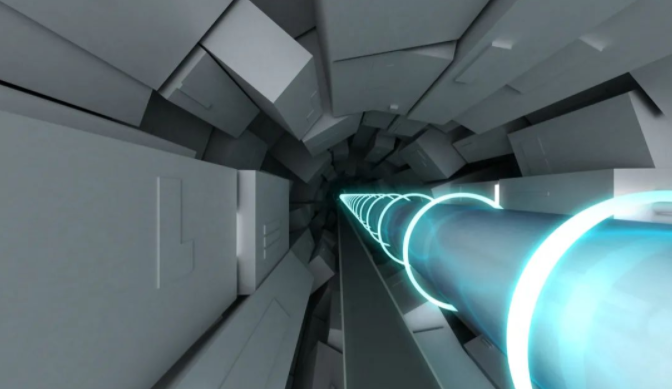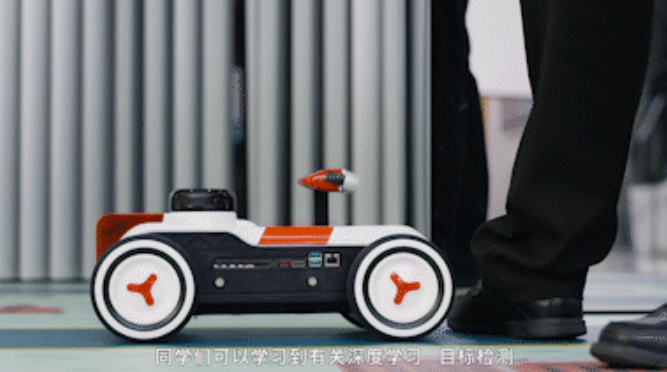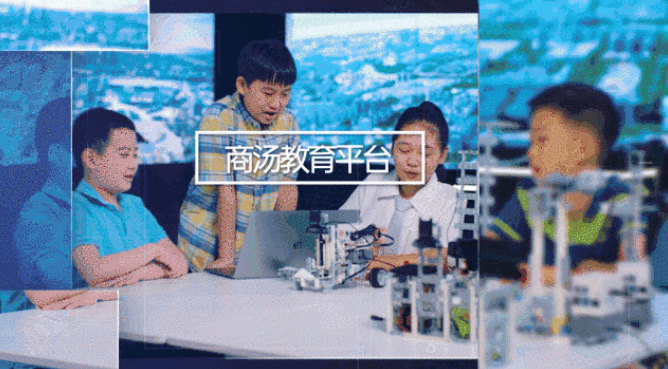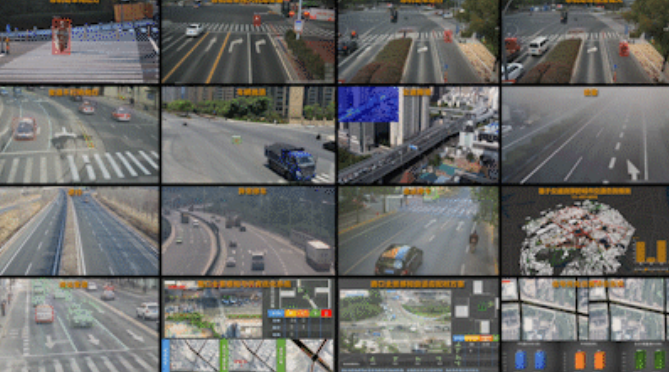In the past ten years, the demands from the latest networks and the best technologies for computing power has grown almost exponentially. Long-tail applications have brought huge value demands, and the core resources occupied by long-tail applications are no second to that by head applications. AI technologies have gradually evolved to general technologies with large-scale parameters from original single direction and single route.
In the past ten years, the demands from the latest networks and the best technologies for computing power has grown almost exponentially. Long-tail applications have brought huge value demands, and the core resources occupied by long-tail applications are no second to that by head applications. AI technologies have gradually evolved to general technologies with large-scale parameters from original single direction and single route.
When the entire technological paradigm had been changed, a new wave of AI underlying infrastructures would inevitably emerge - SenseCore was born therein, and is committed to acting like a great science device, particle collider, to “impact” out a new starting point and realize leaping innovations.
This article is reprinted from Qbitai (official account ID: QbitAI)
Collider, the method and device to discover new physical particles.
As is known to all, collider is a high-energy physics infrastructure, which incorporates the best achievements of researches in the field of human basic physics.
Now, SenseTime has also constructed a collider, which marks a transformation of its achievements after years of industry-university-research accumulation, epitomizes of its latest technological achievements, and is a complete set of AI infrastructure.
It is named SenseCore.
Mr. Xu Li, CEO of SenseTime, said that SenseCore is the symbol of SenseTime’s long-term core competitiveness, the moat of the company’s continuous operation and larger-scale transition, and the key step to promote the reduction of production factors in the AI era.
In fact, Mr. Xu Li on his entrepreneur side is still quite restrained. When his scientist side comes out, he will be excited and utter much faster:
Humans may never catch up with the expansion of the universe by their brains alone. If we want to truly understand the truth of the universe, the input basis cannot rely solely on the limited cognition of human beings here and now, or even don’t have to insist that current processes should be explainable. Rather, we can try to use larger data and stronger computing power, and they may possibly hit more results beyond our expectations.
So SenseCore can be understood as an larger-scale implementation on the GPT-3 and AlphaFold paths, which is a trinity of big data, big model and super computing power, and also a miracle achieved in the “roughly right direction” between input and output.
▎How to make up SenseCore?
In the Ling-gang Special Area of China (Shanghai) Pilot Free Trade Zone, a chip-like building complex will be put into use by the end of this year.
This is SenseTime’s brand new AI Data Center (AIDC), which will have a peak computing speed up to 3740 petaflops (1 petaflop is equal to 10 billion floating point operations per second) - as a reference, OpenAI’s 100billion-level parameter model, GPT-3, needs 3.14E23 floating point operations for a complete training, while SenseTime’s AIDC in Lingang can complete the same training with its strong computing power in only one day.
Undoubtedly, this brand new AIDC of SenseTime is aimed at training larger-scale parameter models.
However, in SenseCore, AIDC accounts for less than 1/3 of 1/3 of the total computing capability.
The entire SenseCore includes the following three layers:
Computing power layer (AI chip and processing card + AIDC + AI sensor)
Platform layer (model production + training platform + data platform)
Algorithm layer (algorithm toolbox +open source framework)
The trinity takes the form of infrastructure to output models, and delivers AI capabilities to the three major implementation directions of enterprise service, urban management and personal life.
Different from “AI models” working as small workshops, SenseCore is more like an assembly factory, which can realize the bottom-level abstraction of algorithm models in different scenarios, and build a universal service platform with modular platform kits.
Especially for customers and scenarios with longer tails in AI implementation, SenseCore can complete the customization of new scenarios based on the combination of different algorithm suites, and realize the large-scale coverage of new scenarios at low marginal costs.
Moreover, based on the system synergy of the AI platform infrastructure, SenseTime can fulfill batch algorithm model production and iterative upgrading in a semi-automatic and adaptive way.
▎Why must SenseTime create SenseCore?
Mr. Xu Li, CEO of SenseTime, said that the essence purpose is to let AI implementation get rid of the state of manpower intensity.
He believes that AI is labor-intensive as a result of its low production efficiency, while the key to improving production efficiency is that the costs of production factors can be low enough.
At the initial stage of AI implementation, project customization is the most common way in the industry. For example, developing a mobile phone detection algorithm requires a team of more than one hundred staffs, and when changing application models of a scenario, additional hundreds of staffs will be required...
Like constructing buildings in different scenes, adding staffs in is a common way to solve problems.
However, if the above project contracting method were followed, AI implementation would be a daydream.
SenseTime’s mode is not a secret: “SenseTime empowers various industries”,and AI implementation can be achieved in various industries by using the method of “1 (basic research) + 1 (product and solution) + X (industry)”.
According to official data, in the past 6 years since its founding, SenseTime has assembled an R&D team of 2000 staffs and launched more than 13000 technical models and more than 17000 business models.
Therefore, in the process of large-scale multi-scenario implementation in different fields, requirements for general models have been put forward.
However, problems also ensue. The more general a model is, the larger the training data is; the larger the model parameters are, and the higher the computing power requirements are.
Before GPT-3 became an instant success, there were doubts both inside and outside the industry about such a general model with large-scale parameters.
Because the previous consensus is that the more powerful the algorithm, the less parameters and computational power; and improving the accuracy of the model is the right way.
Moreover, such an algorithm direction famous for “subtlety” means that the model is precisely deployed for calculation and execution, just as in mathematical problem solving, where the process is seamlessly deduced, and finally the results are given accurately.
The “computing power” required should be as little as possible.
If there is a way to solve problems forcibly: input the most data, make a forced calculation, and finally give results - even though the answers are correct, such a way will not be respected.
As early as its startup, SenseTime had taken the route of subtle models to provide AI solutions for mobile phone and Internet companies.
However, with the large-scale expansion, after SenseTime entered the ToB industry and urban business fields, the “weakness” of subtle technology models in the long tail demand and application of the industry has also been exposed.
For example, in the implementation of business, it is natural to preferentially select head applications large flow, high display, high frequency, and high input-output ratio. Consequently, industry participants compete for applications such as face swiping for metro entry.
In comparison, a lot of applications such as urban fire prevention and water prevention are used with lower frequency, but the resources required to be accumulated and invested for them are no less than those for head applications. Such applications are on the long tail end and therefore not popular, although there are some rigid demands for them.
Finally, from the perspective of the demander, if problems including long tails cannot be solved in a scenario, the willingness to switch to a new solution and thus pay for it will be reduced.
Therefore, seen from the perspective of the commercialization and value closed-loop of AI implementation, and from the perspective of the demand-side drive, “one-size-fit-all” solutions are infeasible, and it is natural to develop large-parameter models.
Furthermore, on the evolution route of AI technology, an anti-consensus trend has emerged from more dimensions.
Taking AlexNet as the epitome of the development of AI models for the last ten years, the demands from the latest networks and the best technologies for computing power has grown almost exponentially, that is, approximately ten times every year.
As a player in the industry, Mr. Xu Li has also obviously perceived this trend.
He believes that the reason for the trend is actually simple: increasingly richer expressions, increasingly general models, and more and more parameters, and therefore increasingly higher computing power demands.
For the entire industry, the demands from the most advanced algorithms for computing power of has increased by nearly a million times.
Secondly, Technologies themselves are evolving.
The original technologies were evolving towards a single direction and along a single route. General AI seemed to be out of reach. However, in the past several years, driven by rigid demands from general problems, some general language models, general visual models, and even general multimodal models have begun to make breakthroughs. What were once not working are now becoming possible.
The CEO of SenseTime admits that SenseTime has taken a lot of efforts to build general models, but the advantage is that they have a significant effect on solving the long tail problem.
The ensuing challenge is the thirst for a new wave of AI infrastructures with computing power as their core.
“Just like in physics exploration, if there were no particle collider, many core tasks could not be carried out.”
Mr. Xu Li emphasized that in the tide of large-scale AI implementation, it was time for SenseTime to solve challenges of universal models and to have centralized large-scale computing power.
He recalled that since 2016 or 2017, SenseTime had started to solve challenges of large-parameter models, and its SenseNet had been built to reach more than 1000 layers.
With increasingly deeper model network and more and more parameters, the problem of computational power became outstanding.
Therefore, from 2018, SenseTime began to take a more serious look at chips and hardware, and completed the “prototype” of SenseCore on basis of its own computing power center.
Afterwards, the AIDC with an investment of 5.6 billion yuan was commenced, and delivered at the end of 2021.
Of course, two new breakthroughs in the field of AI had also taken place during that period, which reassured SenseTime.
The first one happened in 2019, when OpenAI began to build large-parameter models. Later, the company made a global sensation with GPT-3 in 2020.
The second one was DeepMind’s AlphaFold 2.
In Mr. Xu Li’s eyes, there is actually the same core path behind the progress in two different directions:
after the output direction can be roughly determined, larger data is input to “impact out” the result.
And isn’t SenseCore exactly the practice machine and infrastructure of this core path, and also exactly the particle collider in the AI field?
▎What can SenseCore do?
It is natural for SenseCore to build large-parameter models.
First, It can solve the long tail problem in AI implementation.
For example, in urban daily governance, it achieves a full AI process coverage over the work scenarios of “urban management”.
Various problems in public scenarios, from exposed garbage and disorderly stacked shared bicycles, to epidemic, fire, flood, crowding, stampede, hazardous chemical leakage, and so on, can be solved by SenseCore in a one-stop way, whether they occur at high frequency or low frequency.
From discovery, alarm, execution to case closure, the whole process can be handled in an AI-based way, and more efficient urban governance can be achieved through human-machine interaction.
Furthermore, this is not an assumption, but the reality of implemented by the prototype of SenseCore in the Shanghai One-Network Unified Management Project.
Secondly, SenseCore has successfully built large-parameter models, moreover in a bulk way.
By business scenario, models are classified into large ones models such city, automobile, industry and small ones such as screw, nut, and identification of items in refrigerators…
By technical scenario, models are classified into visual field, language field, autonomous driving field, medical field, and pharmaceutical field...
In each field, is it possible to input enough data and then collide with SenseCore to generate the result?
For example, in field of protein structure prediction, even with AI method, it is necessary to have both experts in biology and AI to cooperate...Is it possible to get the correct results at last, only if both parties carefully design the process and carefully prepare the input data?
Where does SenseCore make difference?
If you know the roughly correct direction and goal is to predict the protein structure, then you don’t have to carefully prepare input data and process, and you can even use collective effort to input all possible relevant data to “SenseCore”. Finally, SenseCore will exhaust all possibilities and also get the correct result.
Therefore, extended from this level, SenseCore means the lower implementation threshold.
From the day when industry implementation of AI was carried out, there has been a continuous discussion and no consensus on whether the dominant power belongs to AI doctors or traditional industry veterans.
One of the most referential answers is both, emphasizing integration and symbiosis.
However, if integration is required, the scale and speed of landing will naturally be seriously limited. After all, people who both understand AI and master AI skills are really few and far between compared with traditional industry talents.
As an infrastructure, SenseCore turns the AI capability into an input-to-output machine and tool in the essential path.
People who use this tool can come from any industry and any field.
As long as you have data thinking, define the target direction clearly, and know how to find possible data, then SenseCore is not fundamentally different from “camera” and “computer” - each of them is a tool.
So Mr. Xu Li said that this is why SenseTime regards AI education as an important business component.
“The current education tells young people that it is necessary to strictly deduce each step to produce the correct result before giving a score. However, there may also be a way in the future to obtain the correct result, which does not require you to master the derivation process.”
Just properly utilize the data you need, know how to operate and use it, and then put the data into the “device”. Finally, you will get the problem solved too.
This is why some people believe that it is unnecessary to learn Go when playing against a Go master like Ke Jie or Lee Sedol.
Actually, under this thinking, educational methods are really worth re-examining.
After all, the “computing geniuses” we praise nowadays are not the people who are the most powerful at oral and mental arithmetic, but the people who know how to use computer tools best.
Of course, if people follow the idea of “Big AI Device” and expand it to a more macroscopic “understanding of the world”, will human discovery and cognition of laws also be refreshed?
What are the modes humans follow to understand and transform the world?
Aristotle advocated deduction, which is a strong derivation emphasizing causality and features a linear evolution and development.
While the second mode belongs to the era of Newton and the era of Einstein, showing transitional progress.
The basic theoretical breakthroughs brought by them were even “hypotheses” at that time. It was in the attribution of geniuses of later one or even more generations that their process argumentation was completed.
However, history is always strikingly similar. Every breakthrough in basic theories brings a wave of more powerful inventions and more advanced civilization.
Mr. Xu Li jokingly called this kind of civilization transition promoted by geniuses “God pats the head”.
But what fascinates him more is a question: can SenseCore be the next one to pat the head like God?
In the past, human scientific exploration was based on known cognition deducing the unknown, and therefore would be undoubtedly limited by “known cognition”. Moreover, a large number of important inventions and discoveries in human history were the results of “unintentional interferences”.
However, the new paradigm provided by SenseCore provides another path:
To explore the unknown, people don’t have to rely on the input that human beings have understood, and they can try to input more and larger data. In this way, they may perhaps find a law that is closer to the essence.
And isn’t the ultimate tool capability of AI exactly to help people discover and find more and further laws and truth?
▎A new understanding of SenseTime
Finally, when SenseCore turns up, it is also high time to re-examine SenseTime.
What is the image of SenseTime in people's eyes?
Since its establishment for 6 years, SenseTime has attracted much attention despite its “vague” image.
It is usually talked about its scale growth and financing valuation, and always been passionately discussed about the possibility and feasibility of “AI empowering various industries”.
Moreover, it is prone to being blindly imagined in public opinions , since it has extensive implementation fields, and its technologies and products are not directly of To C type.
But at present, with the completion of the establishment of its latest greatest achievement, SenseCore, SenseTime’s origin and destination have been best connected into a line. The core and boundary of SenseTime, the moat of SenseTime, the sustainability of SenseTime from technology to business, and the AI transformation that SenseTime will bring can be fully answered in SenseCore.
Under the idea of SenseCore, SenseTime has built the gathered power of AI doctors into AI tools, which can be used without AI doctors and can achieve output and empowerment in all fields.
Just like the role of generators and power plants after electricity was discovered.
Mr. Xu Li revealed that when he began to boldly imagine the development route in 2018, it was even anti-consensus, but SenseTime still resisted the pressure, did it hard and deep, reached the hardware and bottom layer, and then worked for a row of 3 years.
It’s a bit like climbing before dawn. They knew They were going up, but they didn’t know whether it was the right way to climb the top.
Luckily, OpenAI’s GPT-3, DeepMind’s AlphaFold, and more and more super large-parameter models presented by giant players in the industry have proved from different dimension that it is indeed a way to the future.
Xu Li also revealed that, according to the internal plan, SenseCore, with a hardware cost of 56 billion yuan, will be able to pay back after 2 years of operation, and will enter the profit track by 2025.
This is the long-term core competitivenessof SenseTime for the future, and the time cycle to establish this long-term competitiveness constitutes the barrier and moat.
What is more, when SenseCore is launched, the threshold of AI empowerment will be further lowered, and the whole process of digitalization and intelligentization will be further accelerated.
The current location of SenseTime’s Beijing office, the Ideal International Building, is the “blessed place” for the previous generation of original technology companies to achieve the transformation from technological innovation to commercial innovation.
Mr. Xu Li also likes comparing search engines to the changes that “SenseCore” will bring to SenseTime and AI industry.
He believes that the prosperity of the Internet today is due to the success of search engines in linking information in the virtual space, - whether the information is high-frequency, low-frequency, high-value, or long-tailed.
In the real world, the same “search engine” is always lacking.
Because many things in the real world cannot be structured and parsed. But, if SenseCore is successful, it can accelerate the structuralization and digitalization of the real world.
Naturally, the two core technologies in the development of the Internet - search and recommendation - can also be reproduced and applied in the real world.
Furthermore, in comparison with the value created by the Internet economy, a larger part of human economic activities and creation are originally off-line.
So, Mr. Xu Li firmly believes that, AI is entering the next time point, which shifts from the technological innovation cycle to the business innovation cycle.
“When search engines boom, there will be an ecosystem around the search engine; when video platforms boom, there will also be a business ecosystem around the video platforms.”
The co-founder of SenseTime said that many people asked him whether AI entrepreneurship was outdated.
His answer was:
It is just the right time.

